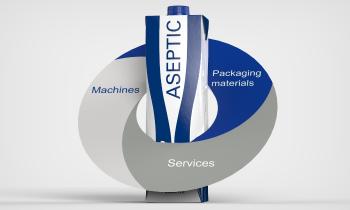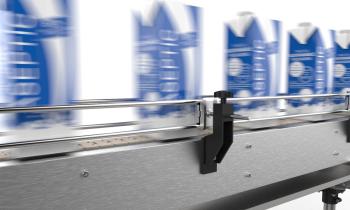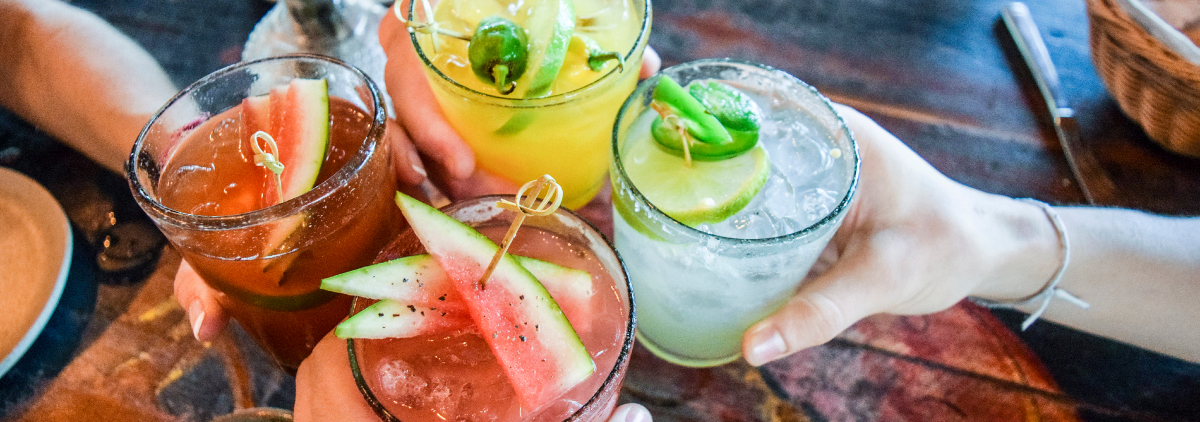The top 5 beverage consumer trends in 2022
Beverage consumer trends have changed dramatically in just a couple of years. Shelter-in-place orders[1] that followed the pandemic have impacted not just international commerce, but also people's top priorities and taste. Now, more than two years after the first case of COVID-19 was reported in Europe, the world is gradually reopening and the preferences in terms of flavor are shifting yet again.
How so? Here are the top 5 beverage consumer trends in 2022.
#1 Source locally, shop globally
In March 2020, nearly 3 billion people went into lockdown[2]. All of a sudden, everyone was buying goods online[3]. With no alternative, the elderly, an age group that was mostly unfamiliar with online shopping, became digitally savvy. In the space of a few months, the share of internet users over 55 jumped from 6%-8% to 25%-30%[4]. At the height of the pandemic, ten years of e-commerce growth happened in just 90 days[5].
This put global commerce under stress, causing worldwide supply chain disruption and inflation. Not only that. The pandemic also triggered several game-changing phenomenons, such as the rise of working from home[6], the Great Resignation[7], the emergence of suburban and rural communities at the expense of vast metropolitan areas[8] and, ultimately, the rise of backup planners who, mindful of the stockpiling frenzy of 2020[9], are looking for options online.
At the same time, another market-shaping trend has taken place, i.e. the move towards locally-sourced goods. With distribution networks in disarray, buying local is not only a necessity for most, but also a way to take a stand for sustainable innovation, as people increasingly prefer to support nearby shops than tech giants. With the economy reopening and worsening inflation data[10], the ability for brands to fill their customer's demand in a more efficient and local way, combined with an omnichannel retail strategy[11], will be instrumental in the future.
#2 Go green or go home
Green activism has never been more in fashion. A 2020 survey by First Insight reported that 34% of Gen Xers, 23% of baby boomers and most Gen Z US consumers would pay a 10% premium for eco-friendlier products[12]. Indeed, more than a third of consumers all over the globe are willing to pay more for sustainable goods and services[13]. The planet tops the agenda[14]. To conquer the heart and soul of this green-conscious population, companies are redesigning their business models and value chains to focus on renewables and recycling. Ethical manufacturing and circular economy are the keywords of this new era.
In this context, traceability is of utmost importance. Contrary to the conventional wisdom, consumers do check labels and also take sustainable packaging into account while purchasing. A McKinsey research shows that approximately 35% of consumers would buy additional sustainably packaged products if they were more available in stores, available for more products, and better labeled (to indicate green packaging).
Last but not least, LCA is ever more taking the center stage. In order to properly assess their environmental impact, brands are increasingly relying on life-cycle assessment, or LCA - a data-driven methodology that analyzes the sustainability issue from every angle, including raw material extraction, components manufacturing, assembly, energy use, end-of-life recycling and disposal.
#3 New life, new style, new values
The pandemic has not only changed people's lives; it also changed their values. People are moving to the suburbs[15], changing jobs[16], even lifestyle. They're making the Great Life Refresh, reconsidering their goals and actions to pursue them. After two years of pandemic-driven high alert, consumers are seeking a simpler, less anxious life.
To target the changing consumer base, brands are now going for a "clean label" that focuses on the quality rather than the quantity of the ingredients. Simplicity also means transparency and removing controversial ingredients such as sweeteners and added colors. A growing number of brands are also adding nutrient-dense ingredients like vitamins and proteins. Oftentimes, simple means natural - at least in the mind of the consumer.
There’s more. As we’re seeing the end of the pandemic, life starts anew, often with a reboot. People are not content with going back to their old normal: exhausted from shutdowns and restrictions they now want to embrace change, redesign their life and start a journey of personal growth, authenticity and self-love. In light of this, brands must adapt their storytelling and product, find new and different ways to engage with customers and even reconsider their values.
In terms of the beverage market, this coincides with more people looking for bold, loud, and proud, single-note flavors. Sour taste has never been more popular, together with a shift towards an uncompromising return to simplicity, a natural look and feel and a desire for something new. “Client requests have taken a 180-degree turn on flavor, especially where seltzers and sparkling waters are concerned,” says Tom Gibson, chief flavorist of beverage development company Flavorman[17].
#4 Be healthy, but also take it easy
Health is still a top priority for most consumers, but not as much as it was in the last couple of years. Indeed, healthy, and functional beverages are on the rise: no and low alcohol ready-to-drink offerings have exploded from North America to Europe and Asia-Pacific, proving to be a more convenient and ‘safe’ option. Sober-curious mindful drinkers and wholesome enthusiasts are as trendier as it gets. The interest for reducing alcohol intake is at an all-time high, which means there's a vast, untapped, ready-to-be-served market for low and no alcohol brands[18].
That said, with the reopening making headlines and people flocking the streets, some consumers are now open to slightly less healthy drinks and beverages. Rather than renouncing indulgent experiences, consumers are embracing them with some slight modifications. “Many of the ingredients you would find in your kitchen spice cabinet can introduce an extra element to a drink, providing new dimensions of flavor or functionality,” says Katie Clark, Flavorman’s lab manager. “Consumers tend to react to these twists with greater expectations – an insight that brands can leverage in premium beverage offers.”[19]
#5 Be personal. Personalize.
Studies show that people want to personalize their flavors and sugar levels. For instance, people in Singapore can now customize their favorite drinks, including sugar and ingredient levels, at Starbucks[20]. This trend, far from being a rare occurrence, crosses all segments and age groups. People want choices. We're on a path towards true liquid personalization, where personalized beverages and drinks as service will be a thing[21].
Today, however, most brands rely on packaging to personalize their goods. Truth be told, packaging can truly make one's product stand out, and adapt to several contexts, such as on-the-go consumption and e-commerce. In 2022, aesthetically-pleasing, Instagram-ready packages are a must-have.
However, there's more to being personal than personalization. Now more than ever, people want brands that speak to them on a personal level - brands that can embrace their causes and make their own. According to McKinsey, "purpose can generate topline growth (or serve as an insurance policy against revenue slippage)"[22]. This is especially important in an age when customers are less and less loyal and increasingly judgemental.
Is your business ready for 2022? If you want to stay on top of trends, contact us.
 ASEPTIC SOLUTIONS PROVIDER
ASEPTIC SOLUTIONS PROVIDER
 FILLING EQUIPMENT
FILLING EQUIPMENT
